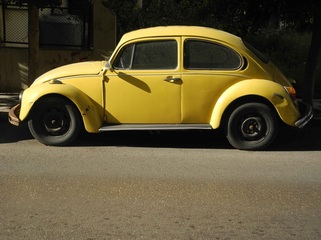
Lebanon has a wide network of surfaced roads, which makes most places very well accessible by car. Lebanon’s traffic is best described as chaotic and anarchic. Speeding, running red lights and parking wherever you please are the ‘rules’ of the road. Lebanese enjoy using the full expanse of the roads, so don’t be surprised if a car suddenly enters your lane, even if it approaches from the opposite direction.
Look out for Lebanon’s numerous potholes, even on highways, and the many un-designated speed bumps, mainly in villages. In the mountains, roads can be narrow and winding, which for the experienced driver will not be a problem. If you do not know the area, driving by daylight is highly recommended and using a road map strongly advised. Asking for directions, particularly outside of cities, is quite difficult as people rarely travel far from their villages.
Car Accident
On Lebanon’s chaotic roads, there is always a risk of getting involved in a car accident. If you do, keep in mind that things there might work differently than you are used to in your own country, which is especially important when the accident is caused by another party. Many people drive without car insurance and are not particularly wealthy, which may make them inclined to do a runner. As soon as you can, note down or take a picture of the license plate number and the car brand of the causing party. Then, call the damage expert of the area where you are located. The phone number can best be obtained via the car insurance company or, if applicable, your car rental agency. Make sure that the car expert takes pictures of the damage, notes down the cause of the accident, and registers the information of the car papers and IDs of all parties involved. The expert will decide on the fault-percentage of each party, which is at minimum 30%. Sometimes, it is worth trying to get some money from the causing party on the spot. In case the causing part is insured, the insurance companies will take care of the reimbursement procedure, although in most instances you will have to chase the insurance company yourself. If you have a rental car, note that car rental agencies apply a deductible of up to 550 USD including VAT.

